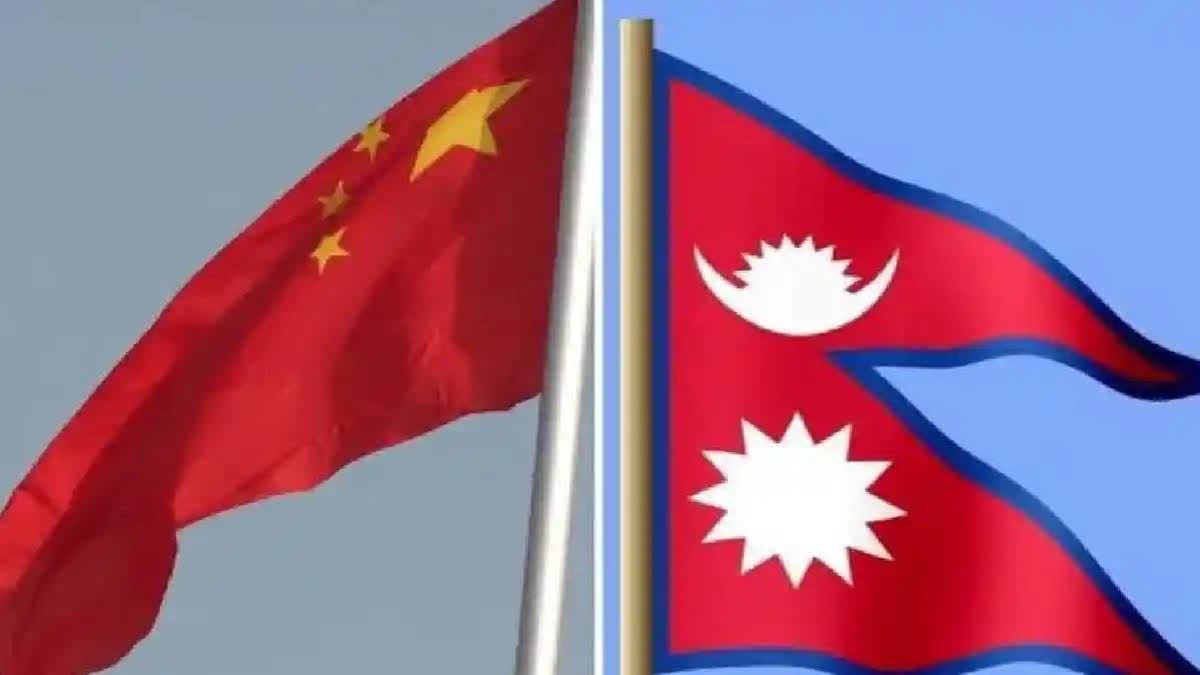New Delhi: The sudden change of political alignments in Nepal, which saw the Left parties coming together to form a coalition government, has all the signs of a Chinese hand working actively behind the scenes. In a significant turn of events, Nepal’s Prime Minister Pushpa Kamal Dahal, also known as ‘Prachanda’, made a Cabinet reshuffle on Monday. This move came after terminating a nearly 15-month-long alliance with the Nepali Congress, citing substantial differences among the top leadership of the two political parties.
Prachanda then forged a new partnership with the party of former Prime Minister KP Sharma Oli, the Communist Party of Nepal-Unified Marxist-Leeninist (CPN-UML). Subsequently, three ministers, Padam Giri from CPN-UML, Hit Bahadur Tamang from Dahal’s Communist Party of Nepal-Maoist Center (CPN-Maoist), and Dol Prasad Aryal from Rastriya Swatantra Party (RSP), were sworn in on Monday afternoon during a ceremony held at the President's Office, Sheetal Niwas. The newly appointed ministers have not yet been assigned specific portfolios. Another party that is in the alliance is the Janata Samajbadi Party (JSP).
The collective strength (142) of CPN-UML, CPN-Maoist, RSP and JSP is more than the minimum required number of 138 seats in the 275-member House. The alliance between the CPN-Maoist led by Prachanda and the Sher Bahadur Deuba-led Nepali Congress was terminated as the growing differences between the two top leaders reached a climax, a CPN-Maoist party leader said.
"As (the) Nepali Congress did not cooperate with the Prime Minister, we are forced to look for (a) new alliance,” Ganesh Shah, secretary of the CPN-Maoist, told news agency PTI. Prachanda became the Prime Minister for the third term with the support of the Nepali Congress on December 25, 2022. After breaking the alliance with the Nepali Congress, the largest party in the House of Representatives, Prachanda joined hands with the CPN-UML led by Oli, which was regarded as Prachanda’s top critic.
Last year, the CPN-UML withdrew its support from the government led by Prachanda due to a disagreement over endorsing the presidential candidate of the main opposition party. However, tensions escalated between the CPN-Maoist and Nepali Congress when disputes arose between Nepali Congress leader and Finance Minister Mahat and Prachanda regarding budget allocation for specific projects.
The discord intensified as Nepali Congress president Sher Bahadur Deuba advocated for the appointment of the party’s senior leader and newly elected lawmaker, Krishna Sitaula, as the chairman of the National Assembly. However, Prachanda wanted to appoint a member from his party to the crucial position.
On Monday, Prachanda and CPN-UML chairman Oli convened a meeting at the Prime Minister’s residence. In the course of the meeting, the two leaders agreed to establish a new alliance and form a fresh government under the leadership of Prachanda. According to observers, with India headed for the general elections in less than a month from now, this is not the right time for a change of government in the neighbourhood.
“India has always been uncomfortable with Left governments in Kathmandu,” Nihar R Nayak, Research Fellow at the Manohar Parrikar Institute of Defence Studies and Analyses and an expert on issues pertaining to Nepal, told ETV Bharat. “India has always been for political parties, which believe in liberal democratic principles.”
Nayak explained that historically, Communist parties were formed in the 1950s to counter democratic parties like the Nepali Congress. The then monarchy of Nepal also backed the Left parties. “The Communist parties of Nepal have always been against India,” he said. “This Left unity concept was encouraged by China.”
Nayak said that after the monarchy was abolished in Nepal in 2008, China actively supported the Left parties in the Himalayan nation and encouraged the unification of these parties. “China tried in 2020 and then again in 2021 to unify the CPN-Maoist and the CPN-UML,” he explained. “But that didn’t work out because of a Supreme Court verdict. Though the two parties merged and formed the Nepali Communist Party (NCP), the party was not registered. As such, the Supreme Court did not allow the merger. After two years, now they have come up with a new coalition government.”
Nayak said that the second-rung leaders of both the CPN-Maoist and CPN-UML believe that their parties should contest elections together. He also said that the person who negotiated on behalf of the CPN-Maoist to form this new coalition government is pro-China. He also referred to visits by delegations and officials of the Chinese government and the Communist Party of China to Nepal in recent times and said: “China is behind all this.”
- " class="align-text-top noRightClick twitterSection" data="">
Read more: Differences Over India-Nepal Power Trade Pact: The China Angle To It



